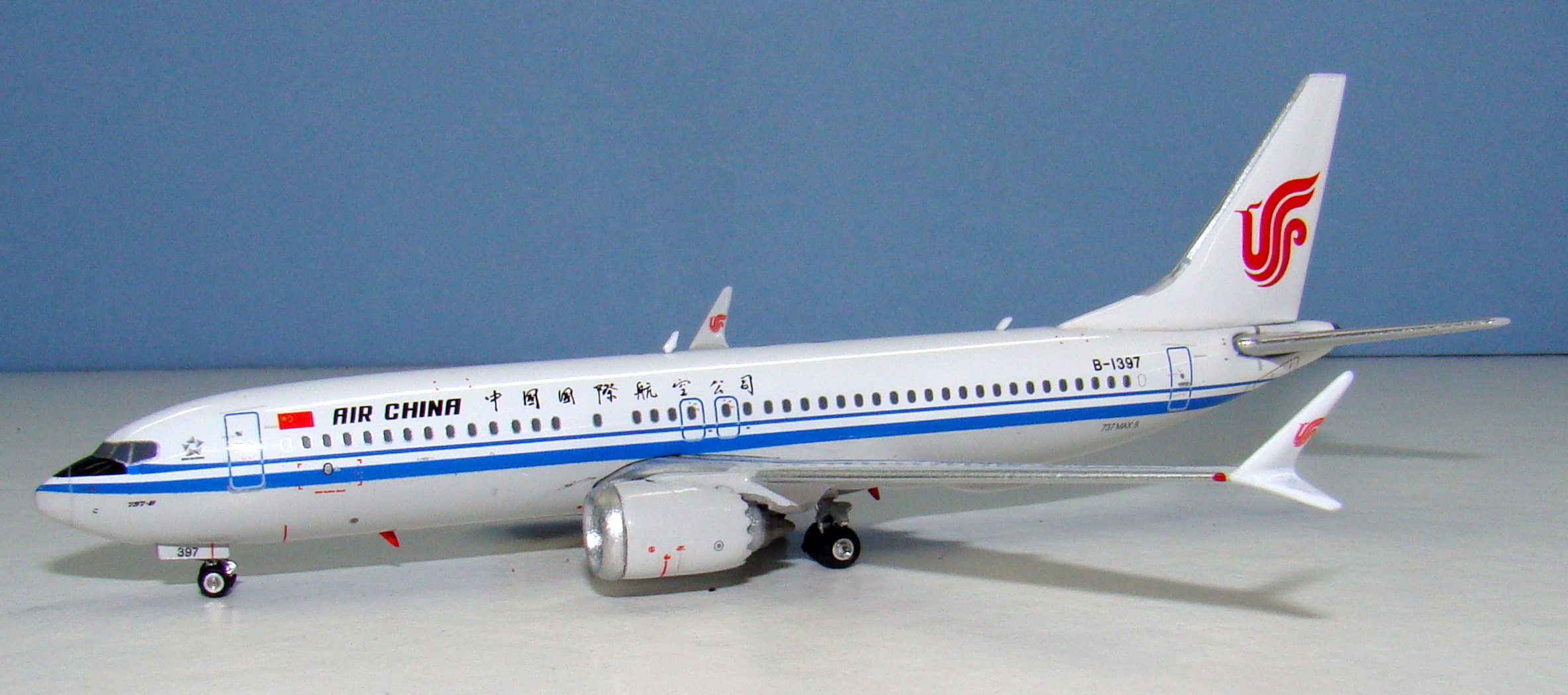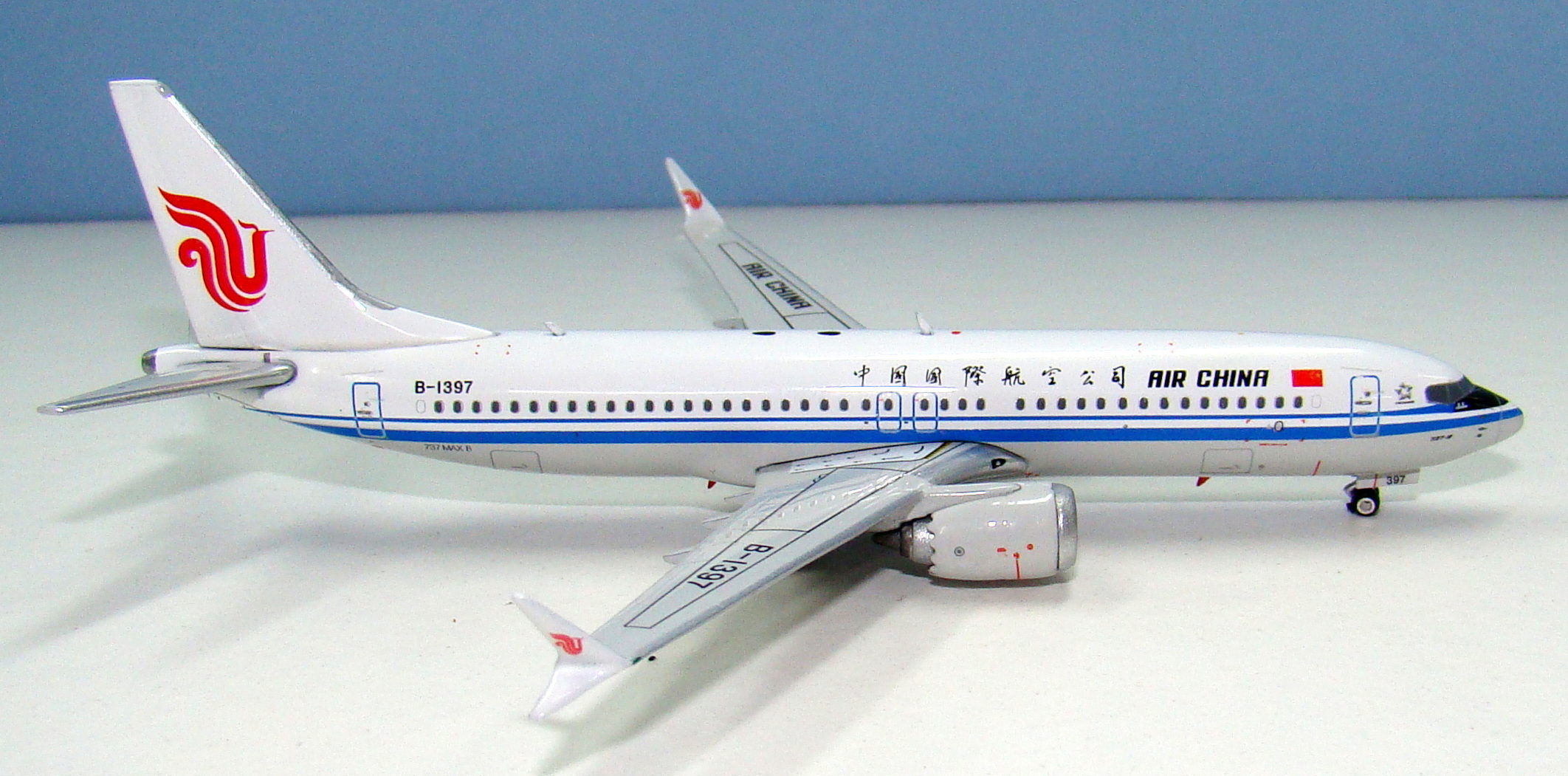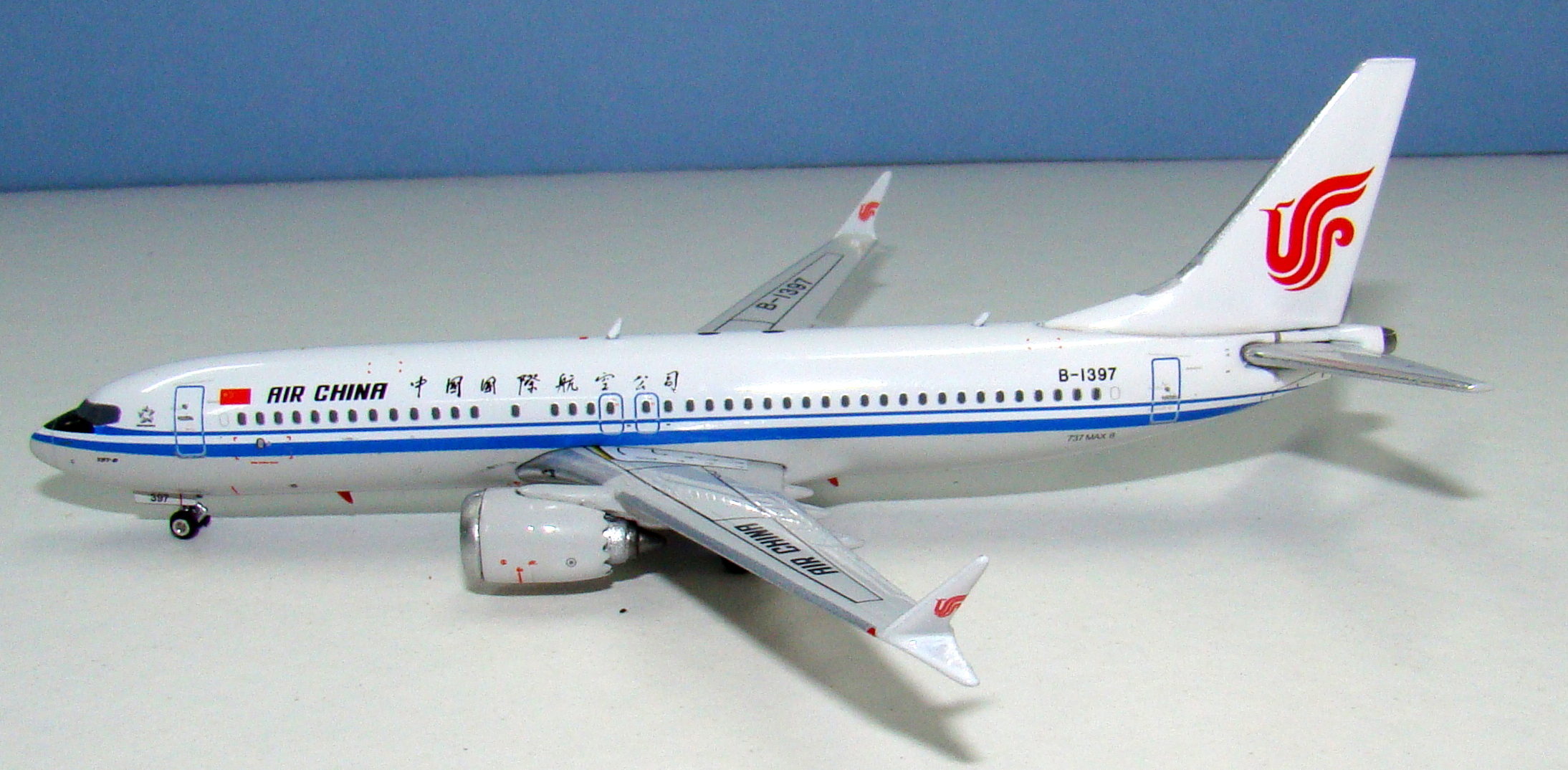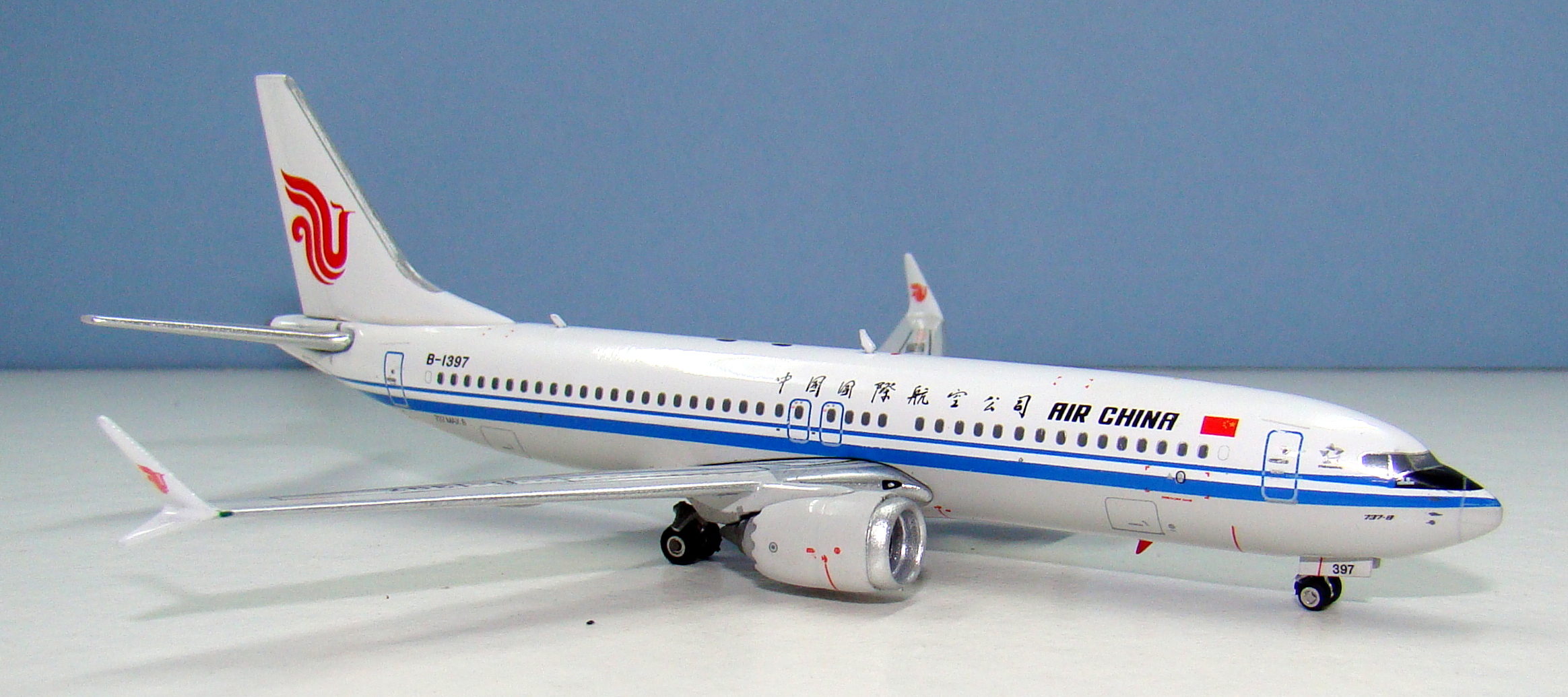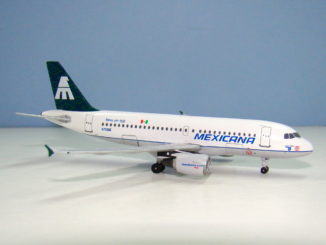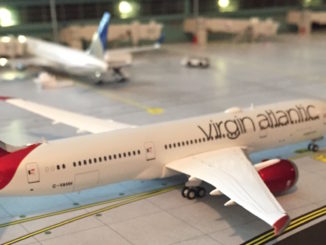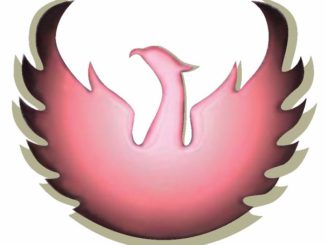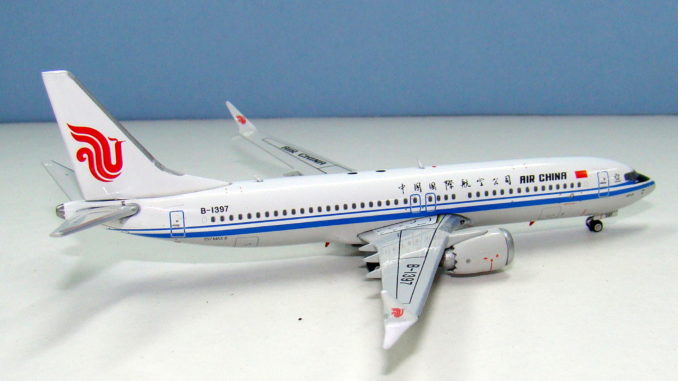
The days of Phoenix Models being a trendsetter in 1:400 scale are long gone. They may have pioneered rolling gears and aerials but JC Wings has stolen the initiative with flaps down variants and both JC and Panda regularly release moulds well ahead of their competition. It is not therefore a surprise that more than a year after Panda and JC Wings announced and released their own 737 MAX-8s that finally Phoenix have come to market with their own mould. The question remains however can it compete?
THE REAL THING
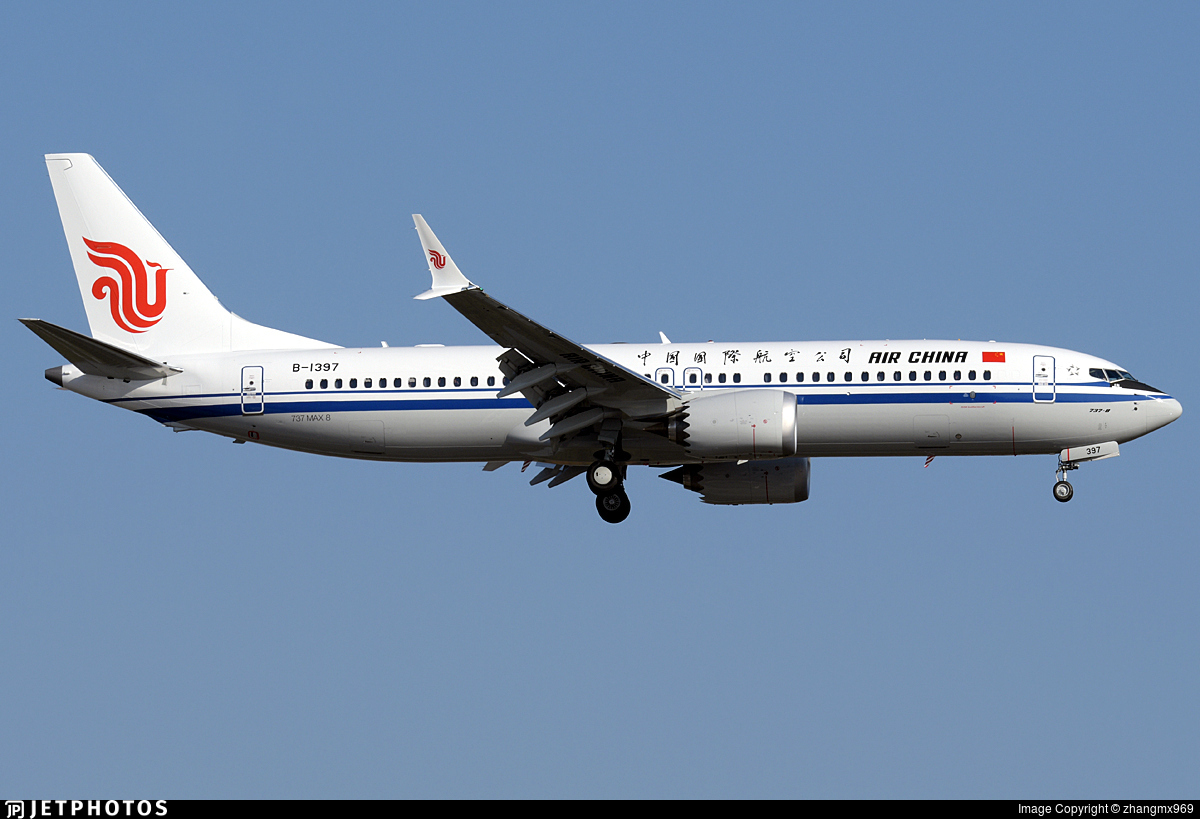
Given that the civil airline market nowadays consist pretty much entirely of Airbus and Boeing options across the vast majority of the capacity range it would be pretty much impossible for both the competing A320neo and 737 MAX families not to rack up spectacularly large orders. Even if there was a major performance difference between the two (and at the base line A320 and 737 MAX-8 there is not) the sheer size of the order backlogs would force airlines into the hands of the other just to secure delivery slots. So it is no surprise at all that the 737 MAX family has sold very well at the middle part of its capacity range at least. In fact there has clearly been a major shift away from smaller members of both families towards the higher end compared to the 1990s when A319s and 737-700s sold well.
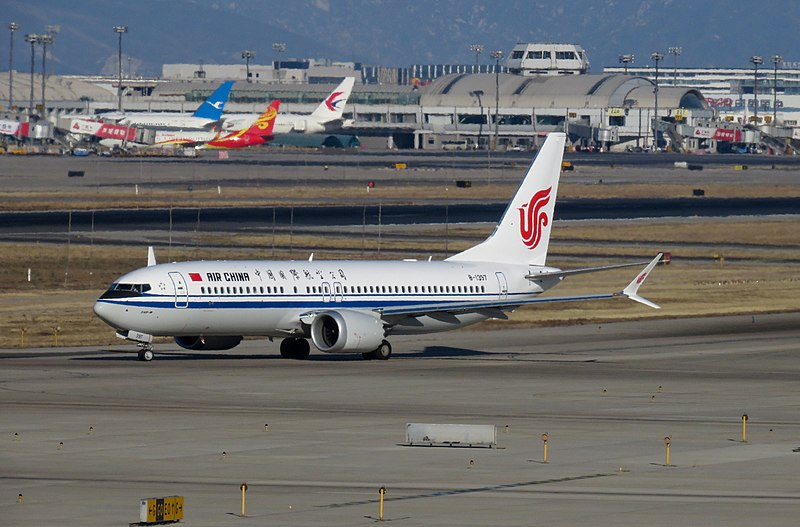
With the continuing impressive growth stats it is also no surprise that the MAX has been especially popular in China. A quick Google search for ‘China orders 737 MAX’ brings up link after link of various orders for the Boeing jet family from both the major airlines and leasing companies. Air China, as with all the majors in China, operates a huge mixed fleet of Airbus and Boeing products including substantial fleets of A319/20/21s and 737-700/800s. Their first order for MAXes came in December 2014 with an order for 60 MAXes worth a book price of $5.9 billion.
Ihssane Mounir, senior vice president of Sales and Marketing for Northeast Asia, Boeing Commercial Airplanes greeted the news with the usual marketing guff:
“Our long-standing and productive partnership with Air China dates back to the airline’s beginning and we are proud the 737 has been part of their success. We are excited to see that the 737 family will play a significant role in Air China’s continued success.”
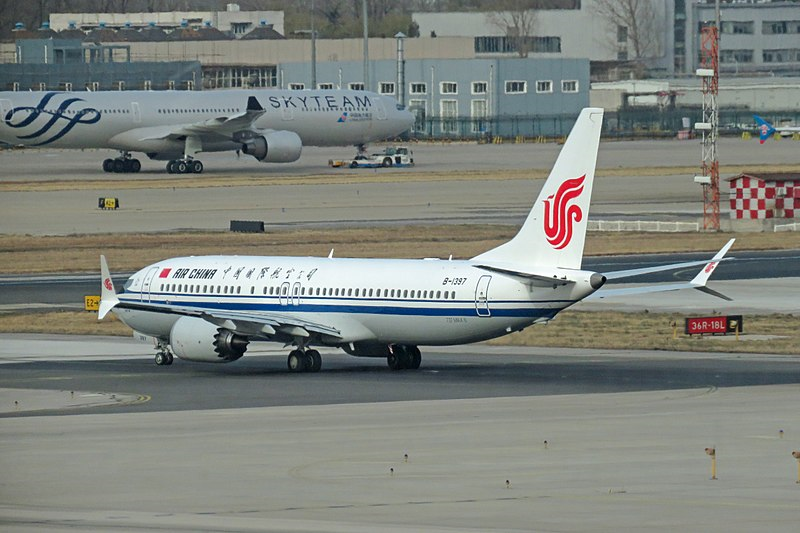
Amazingly anodyne. Anyway this early order for the MAX meant that Air China was also the first in China to receive a 737 MAX-8 heralding the beginning of an order avalanche that will see nearly 100 MAXes delivered to Chinese customers by the end of 2018. The first aircraft, B-1397, was delivered on November 2, 2017 just prior to the visit of the US President. So far 8 have now been put into service with Air China.
THE MODEL
The format for my reviews is to split them into three key areas:
- The mould of the aircraft
- The paint and livery
- Printing and quality control
Each can get a maximum score of 10 for a section giving a maximum combined total score of 30.
THE MOULD
Phoenix have had many issues with their 737-800 mould over the past few years. The mould whilst effectively sound has been damaged by slapdash cockpit window placement and a period of awful nosegear attachment. The result was a run of embarrassingly poor 737s (see my review of an example from last year) so it is from this low watermark position that Phoenix introduces a new MAX. Their most recent 737NGs have been an improvement over what has gone before but even so I rarely consider buying a Phoenix 737 anymore. Considering the high quality of both the JC Wings and Panda MAX offerings this Phoenix mould needs to be pretty spectacular to offer any kind of competition.
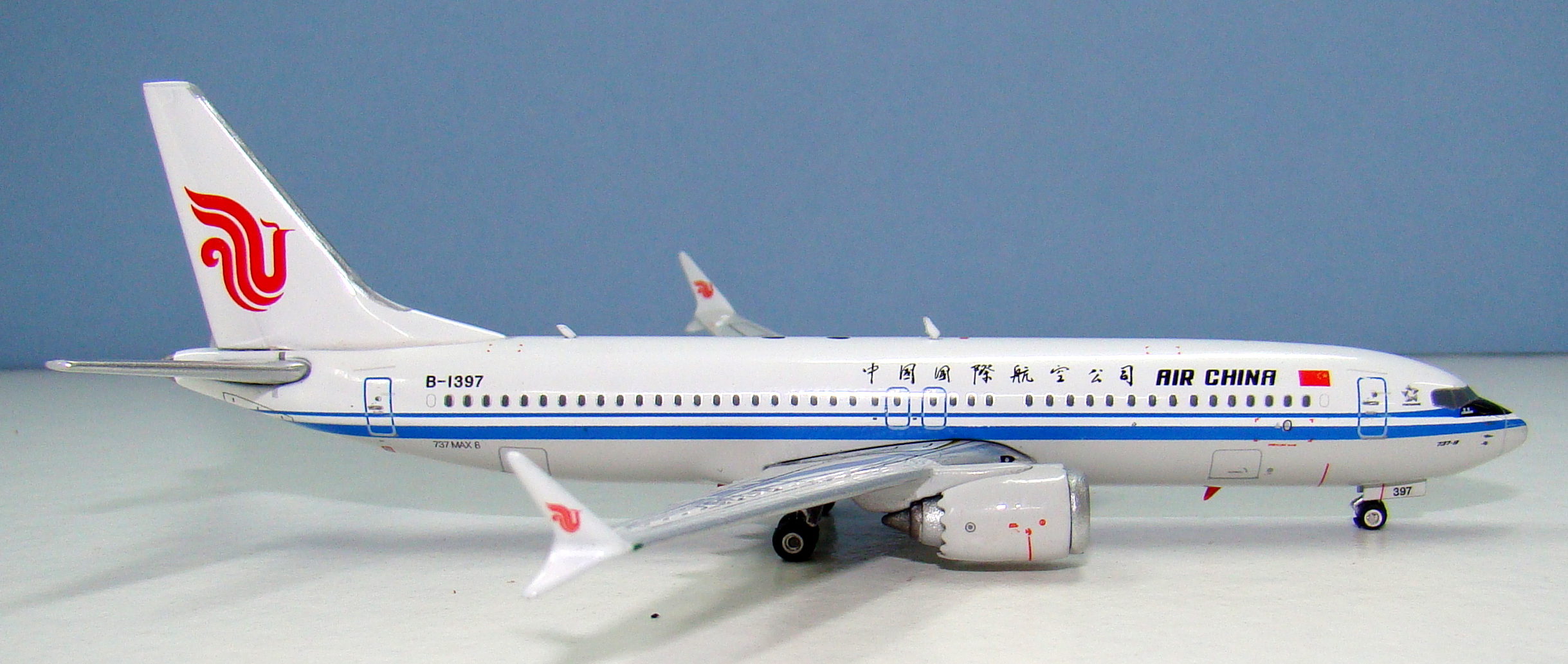
The result is definitely an improvement over most of their 737s but sadly seriously lacking in terms of a 737 MAX-8. Indeed considering that the primary difference between a 737NG and the MAX is the height of the undercarriage this new mould arguably looks more like the former. Looking at the MAX although the increase in nosegear height is only small it makes a major difference to the look of the aircraft. There ought to be plenty of gear leg between the nosegear doors and tyres. On the Phoenix mould there is almost none. This makes the whole aircraft sit too close to the ground. The maingear underneath is odd too – the holes that the tyres fit into when the gear is up are not moulded in to the fuselage but just painted on. It is weird and looks odd (see the underneath photo below).

The nosegear doors are also far too small, almost half the length they should be. So despite the nose being actually pretty decent for a Phoenix 737 (an improvement over their 737-800) the mould looks a little odd at the front. The other major fuselage change has also been bodged. The tailcone should taper almost to a point but the Phoenix tailcone is not long enough and far too rounded.
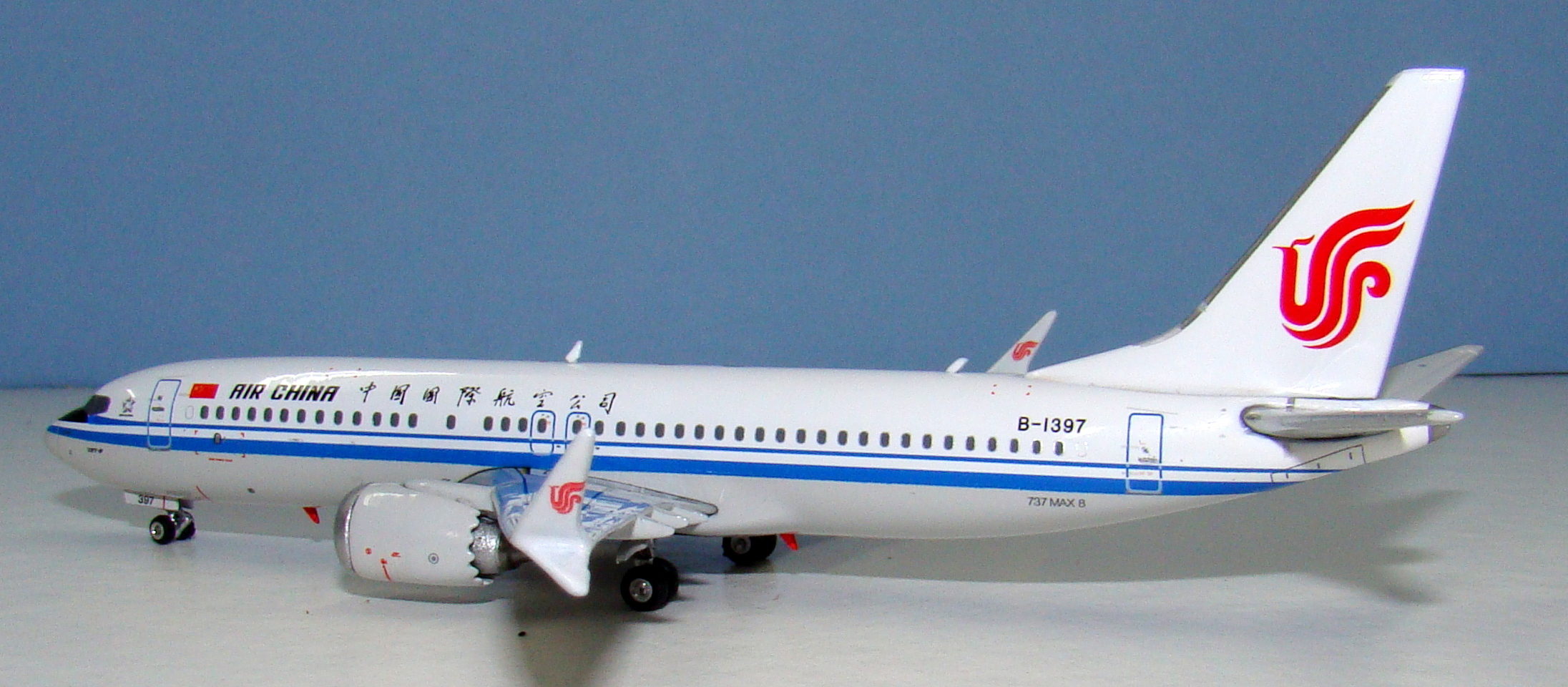
The rest of the fuselage and the vertical stabilizer are actually good. All four of the aerials are present and look good to me. I have no complaints about the wings or the engine pylons. The engines themselves have good ground clearance despite the short undercarriage.
The engines also feature Phoenix’s new innovations – they are see through and have spinning fanblades. As on the A320neos this in my opinion is a pointless feature. Worse here it means that the engines are made of multiple parts. The front rims are separate pieces to the nacelle body. This leaves them open to QC issues and personally I prefer the clean lines of a one piece engine.
So this new MAX by Phoenix is no trainwreck however by failing to recreate two of the main visual cues of the type it is markedly inferior to the offerings of the competition. That’s a shame especially as the nosegear length problem should be easily fixable.
SCORE – 6
PAINT & LIVERY
Air China’s scheme is often criticized for its old fashioned cheatlines and conservative look, however considering the reimaging undertaken by a host of airlines (China Eastern, Japan Airlines, Finnair and most recently Lufthansa) I am quite happy for them to keep this scheme. Hell I like cheatlines so it’s good to see one remaining holdout.
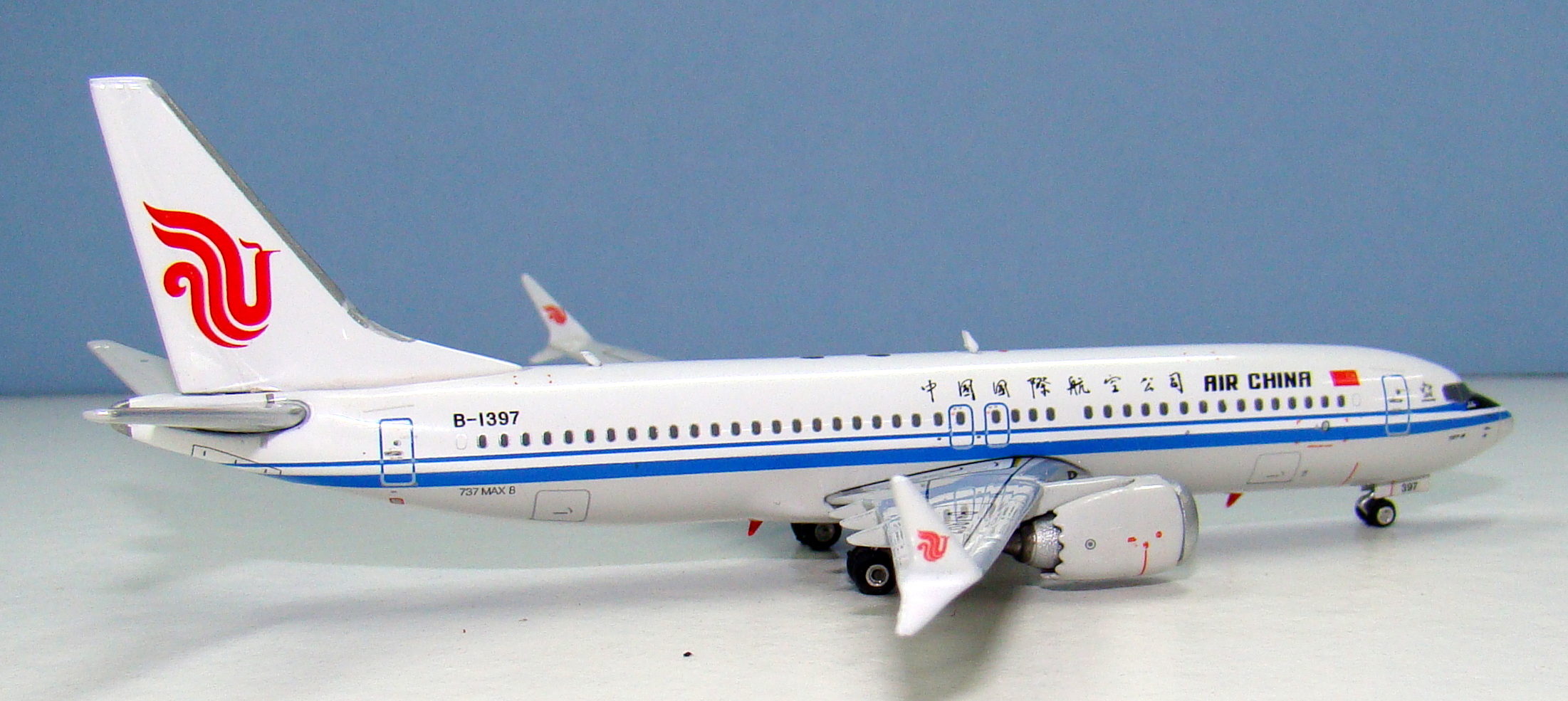
The livery colours are quite simple – a rich dark blue for the cheatlines, black anti-glare and titles, and red Phoenix/VIP logo on tail. Given this, and the frequency of which it is reproduced, it is therefore impressive that Phoenix have got the blue colour wrong. They alone of the major manufacturers use a lighter blue, which is clearly incorrect. Everyone else (Aeroclassics, JC Wings, Gemini and Panda) can get this blue correct so there is really no excuse for cocking it up yet again.
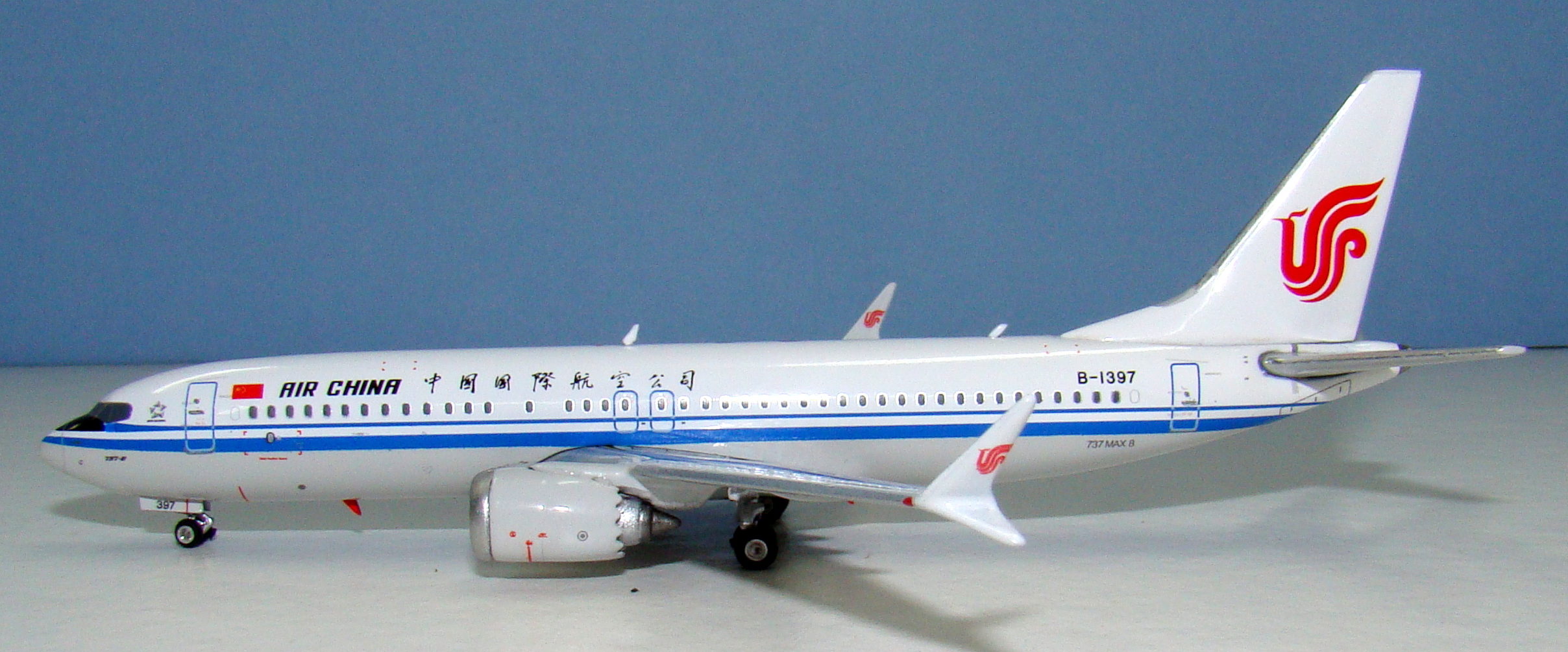
The entire cheatline is marginally too low touching the wingroot rather than being clearly above it, albeit by only a small degree, but it is at the front that Phoenix have not been paying attention again. The lower cheatline on the MAX curves upwards and thins noticeably from the first door forwards. By the time it gets to the nose it is very thin and well above the nosecone, but not on this model. Here it never thins anyway near enough and the amount of white space between it and the anti-glare is too thick.
The rest of the scheme is fine but failing to get the details of one of the commonest schemes in 1:400 scale correct after all these years is poor.
SCORE – 7
PRINTING & QUALITY CONTROL

Phoenix have at least turned up for the printing – the traditional Achilles heel of their 737s. Firstly the cockpit windows are actually quite good. Perhaps slightly large but at least they are level on both sides! The rest of the printing is good too and there is actually quite a lot of detail, including the small ‘737 MAX 8’ titles forward and aft. The only printing discrepancy is the absence of both of the two large scoops on the underside just forward of the wing. Printing underneath has never been a strongpoint of Phoenix models.
One interesting point is the underside aerials, which Phoenix have painted red. Panda on the same model left them white. In reality they are striped red and white. There is also a black scratch on the port side just forward of the wing. It looks bad in the photos but is hard to see on the real thing. Another minor inaccuracy are the maingear wheels. The hubs ought to be solid and grey not detailed and silver.
The construction quality is of a high standard. Although I can see that the separate engine rims are going to be an issue in the future here they are fitted well (the starboard one has a small issue fitting flush with the nacelle body, but it is small). My only criticism is a typical tyre tab on the nosegear.
SCORE – 8
CONCLUSION
I had seen some photos of the Phoenix MAX before mine arrived and I thought it looked a little odd but couldn’t quite pin down why. Now I know Phoenix have just failed to match the new features of the MAX and instead have created this weird hybrid alike MAX/NG mould. It continues a run of mediocre narrowbody efforts from Phoenix and although I wouldn’t rule out purchasing another one it certainly wouldn’t be my first or second choice.
FINAL SCORE – 21


